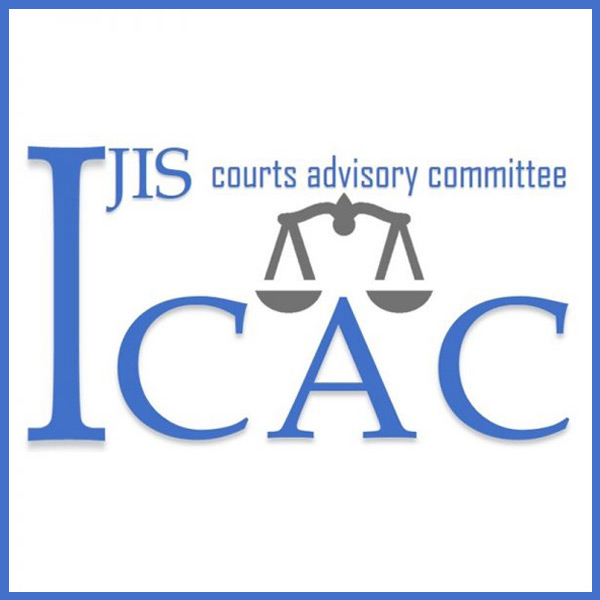Automation and Integration Support Pretrial Reform
A COLUMN DEDICATED TO THE EXCHANGE OF IDEAS ON INFORMATION SHARING IN JUSTICE
Sue Humphreys, IJIS Courts Advisory Committee, Vice Chair
In August 2018, California became the first state to legislate the elimination of money bail as a condition of release from pretrial detention. California will employ an evidence-based risk assessment, rather than financial means or the ability to pay bail, for pretrial release decisions. While Florida stopped short of this measure, Senate Bill 1392 authorizes law-enforcement officers to issue citations for certain misdemeanors in lieu of arrest and promotes other prearrest diversion programs for both adults and juveniles.
These examples are not unique as states across the nation address the perception of inequality in the criminal justice system, as well as the financial burden on communities for pretrial detention. According to a study by the Bureau of Justice Statistics, in 2016, an estimated two-thirds of county jail inmates were defendants awaiting trial or other court action.1
With the recent landmark changes in state laws, it seems timely to discuss these issues with an eye toward how technology can support and increase effectiveness of pretrial reform initiatives in three areas:
- automated risk-assessment tools
- standard data and system integrations
- electronic communication and reporting
Automated Risk-Assessment Tools
Validated, evidence-based risk-assessment tools provide judges with a tool to “easily, cheaply, and reliably quantify defendant risk.”2 Validated assessments are classified as such based on empirical research that proves that they have measurable and predictive outcomes. Several states, including Virginia, Ohio, Kentucky, and Colorado, have implemented risk-assessment tools to help in pretrial decision making. These tools consider factors indicative of an individual defendant’s risk of failing to appear for court or committing a crime while released.
Implementing these automated tools is a positive step. However, technology can go further to help improve accuracy and adoption of these tools. Integrating these tools with other systems that contain assessment data (e.g., criminal history and past appearance rates) eliminates the need for judicial officers or court staff to reenter known data to get to the score. Further, automating inputs to scoring tools improves efficiency and reduces risk of manual calculation or data-entry error.
Data and Integration Standards
When determining pretrial release, with or without an assessment tool, judges must rely on data to determine release versus detention. A defendant’s criminal record and court appearances are important factors. To create a comprehensive view, the data must come from multiple disparate systems. This includes various local, state, and federal record sources. Often, these data are captured and stored in different ways, making compilation and comparison difficult. Further, one of the critical data sets, criminal history, is not always complete. Dispositions are often lacking, especially when charges are amended or dropped during the life cycle of the case.
Data standards can and, in many jurisdictions, do improve risk assessment. They help both manual and automated efforts by providing a consistent human and system language via common data definitions, list-value descriptions, and data structure. Using common data definitions, for example, improves the accuracy of criminal-history repositories by allowing an apples-to-apples comparison. Integration standards reduce the effort and cost of integrating disparate applications to automatically feed assessment tools or provide judges with a one-stop shop for necessary information. Data sharing across applications and jurisdictions through data and integration standards gives judges the peace of mind that they have the most complete and accurate information possible when making pretrial decisions.
Electronic Communication and Reporting
As jurisdictions divert more individuals away from pretrial detention to pretrial release and prearrest diversion, a key to success is consistent communication and check-in protocols. Technology, such as Interactive Voice Response (IVR) and text messaging, allows courts to communicate with defendants cost-effectively. For example, a court can automatically provide reminders and directions to a defendant’s mobile device to help reduce the chances of failure to appear. Some jurisdictions use GPS ankle bracelets for monitoring. Alternatively, courts can leverage purpose-built apps for smart phones that allow for GPS tracking and for a defendant to easily check in and communicate with pretrial and probation officers.
Pretrial reform will require tough policy choices first. However, decision makers should consider how technology can support effectiveness of pretrial diversion and release protocols with improved communication, data sharing, and assessment tools as they debate the benefits and challenges of pretrial reform.
Tell Me More
For more information on efforts to evaluate and improve pretrial policy and practices, check out these helpful resources.
The Pretrial Justice Institute provides a wealth of information on pretrial reform efforts across the nation, statistics and studies on the costs and risks of pretrial detention, and opportunities and alternative options.
The Resource Bulletin “Using Technology to Improve Pretrial Release Decision-Making,” published by the Joint Technology Committee (JTC) in 2016, highlights the value of validated evidence-based pretrial risk assessment tools to determine pretrial release eligibility. The bulletin references a study conducted in Kentucky examining the impact of pretrial detention on the likelihood to re-offend and on sentencing outcomes.
“Developing a National Model for Pretrial Risk Assessment” summarizes research and conclusions by the Laura and John Arnold Foundation.
About the Author
Jenny Bunch is the product owner of ImageSoft, Inc., a software-development company with a focus on intelligent workflow automation. She has over ten years of experience working in the justice industry, both in software development and side-by-side with clerks and judges implementing software solutions. She is a member of the IJIS Court Advisory Committee and previously served on the NACM Communications Committee, where she contributed to the annual guide for court managers in 2014 and oversaw the Top 10 Court Websites Award nomination and selection process for three years. Jenny holds a master’s degree in public administration, and she is a certified Project Management Professional (PMP).
- Zhen Zeng, “Jail Inmates in 2016,” Bureau of Justice Statistics Bulletin (February 2018).
- “Developing a National Model for Pretrial Risk Assessment,” Laura and John Arnold Foundation Research Summary (November 2013).


